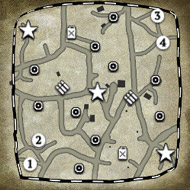Combat statics can also be misleading as they often list hard numbers and fail to take into account the complex realities of large operations (i.e. terrain, offensive, defensive, reasons behind a certain action)
Life and war are complicated, its hard to list stats and causality numbers and get a real idea for how something actually happened. Both sides fought bravely with what they had, often the outcome of a battle was out of the average soldiers hands long before the first shot is even fired.
To every soldier the most important part of the war is that which is in his field of hearing and vision. To the guy in an M4 whose shell just bounced off of the Panther, his vehicle is a piece of crap built by the lowest bidder. But being under fire MAKES the memory that much more important. If you ask the guy in the Panther if it was worth it to have that design then the answer will depend.... Did it bounce the shell and then die to the M18 that hid in ambust and hit it in the side? Then no. Did it destroy the M4 and then break down while trying to get away from the other 3 M4s in the platoon? Did the other Panthers and PIVs in his regiment run out of gas or break down before this engagement? Both soldiers, being in a position where people were shooting at them, are going to be prone to cursing their kit. But one of them is going to win the battle. Guess which side the soldier would rather be on.




















 cblanco ★
cblanco ★  보드카 중대
보드카 중대  VonManteuffel
VonManteuffel  Heartless Jäger
Heartless Jäger 